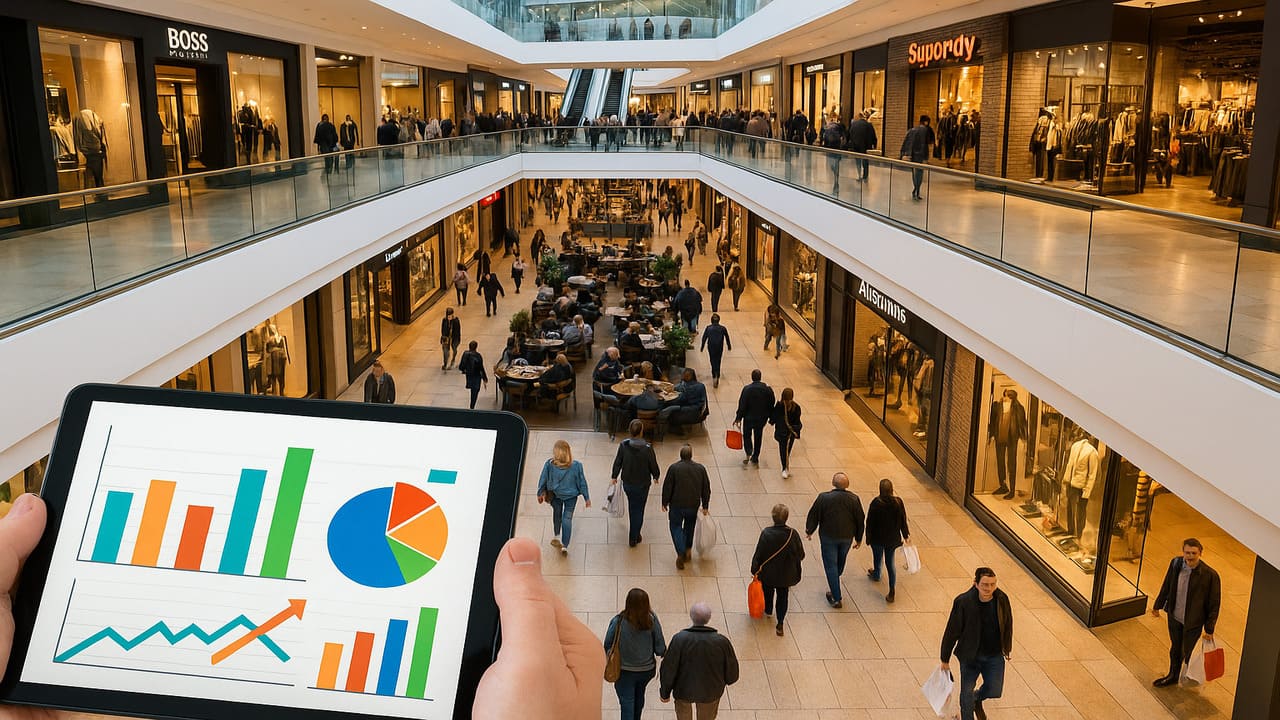
The Berkshire Mall – Retail analytics refers to the use of data-driven technologies to understand consumer behavior, optimize operations, and improve sales performance. In today’s fast-changing retail landscape, malls are no longer simply clusters of stores they are evolving ecosystems that require intelligent insights to remain relevant.
For shopping malls, analytics tools capture information such as foot traffic patterns, shopper demographics, sales conversion rates, and customer preferences. These insights allow mall managers and retailers to adjust strategies in real time. From deciding store placements to designing marketing campaigns, retail analytics provides a scientific foundation for decisions that were once made on intuition alone.
The competition faced by shopping malls is intense. E-commerce continues to reshape consumer habits, forcing physical retail spaces to prove their value through unique experiences and efficient management. Retail analytics has become indispensable in this transformation, helping malls balance customer expectations with business sustainability.
Through data, malls can monitor how visitors interact with different zones, how long they stay, and what triggers purchases. This not only assists retailers in tailoring their offerings but also guides mall operators in organizing events, adjusting layouts, and introducing services that maximize engagement. In essence, retail analytics has shifted shopping centers from reactive to proactive business models.
Read More : Contactless Shopping: How Malls Are Adopting Smart Payment Systems
Several UK shopping malls have demonstrated how retail analytics can be applied successfully to enhance performance. Among them are The Glades in Bromley, the Grand Arcade in Cambridge, and The Atrium in Camberley. Each has integrated analytics into daily operations, yielding tangible benefits.
These examples highlight how retail analytics is not confined to theory but is actively shaping competitive strategies in real-world settings.
Retail analytics brings a broad spectrum of advantages to shopping malls. These benefits extend across operational efficiency, tenant relationships, and customer experience.
Some of the most impactful benefits include:
These advantages collectively strengthen a mall’s ability to compete with digital platforms by offering a more intelligent and memorable in-person shopping journey.
Despite its promise, the adoption of retail analytics is not without hurdles. One of the primary challenges is data integration. Shopping malls often deal with multiple systems point-of-sale data, footfall counters, Wi-Fi tracking, and customer loyalty programs that must be harmonize to provide meaningful insights.
Another challenge is privacy. With regulations such as GDPR in place, malls must ensure data is collected and processed ethically. Transparency with customers about how their data is used is essential to building trust. Additionally, not all mall operators have the expertise or resources to analyze data effectively, making partnerships with third-party providers a common necessity.
Also Read : US E-Commerce Firm Pattern Eyes $2.6 Billion IPO
Looking ahead, retail analytics will likely evolve with the integration of artificial intelligence, machine learning, and real-time predictive modeling. Malls may soon deploy systems that not only track customer behavior but also predict future trends, enabling even more dynamic decision-making.
Another area of growth lies in sustainability. Analytics could be use to monitor energy consumption, waste management, and resource efficiency, aligning shopping centers with environmental goals. By combining sustainability with customer insights, malls can position themselves as forward-thinking community hubs.
While retail analytics equips malls with the intelligence to operate efficiently, the ultimate goal is to create spaces where people genuinely want to spend time. Future success will hinge on combining data-driven insights with creativity. Pocket parks, cultural events, dining experiences, and wellness zones are examples of how malls can move beyond traditional shopping to become experiential destinations.
In this sense, analytics provides the roadmap, but imagination fuels the journey. By pairing smart data with bold vision, shopping malls can redefine themselves as thriving social centers in the modern urban fabric.
This Article About Retail Analytics Written by: Sarah Azhari | Editor: Micheal Halim
Information Source: RetailReport.com